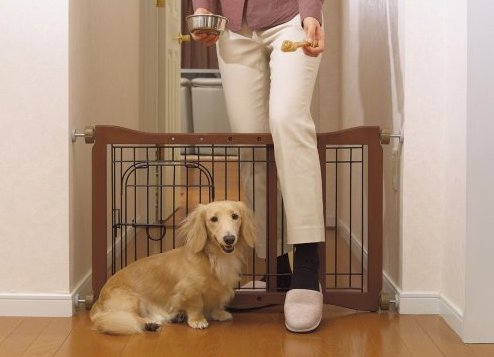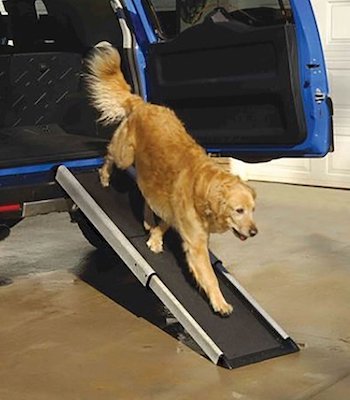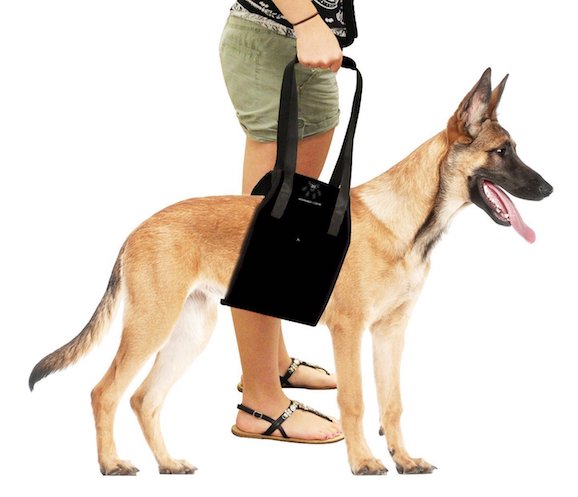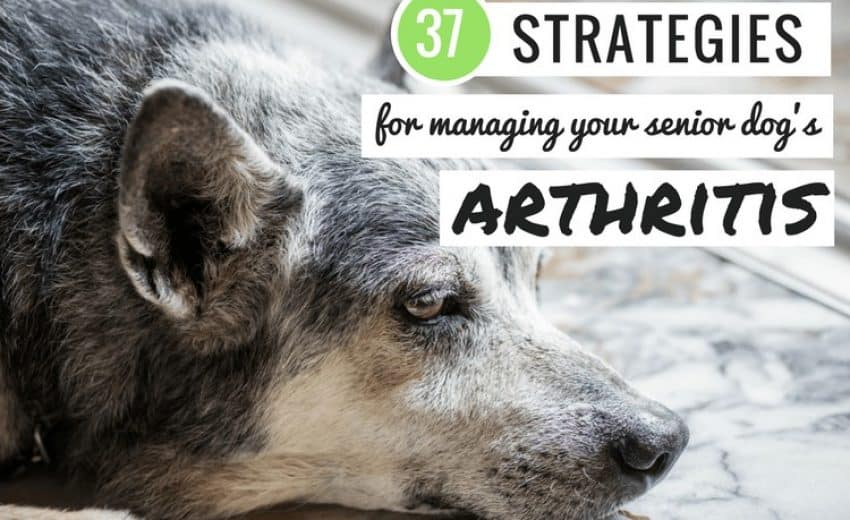It’s heartbreaking to see your dog struggling with the symptoms of canine arthritis. Watching him struggle to walk around or get up from his bed is a daily reminder that he is in pain — unrelenting, depression-inducing pain.
But do not despair! There are a variety of different treatments people have employed in an effort to reduce the symptoms associated with canine arthritis – at least 36 by our count.
This is great news for pet parents, as it is often necessary to try a variety of different approaches before you find the formula that helps your pup best.
37 Ways to Manage Your Dog’s Arthritis: Key Takeaways
- Canine arthritis is a condition in which the tissues in a dog’s joints start to break down. This will usually lead to pain and a reduced range of motion, and it may have trickle-down effects, such as eventual weight gain.
- You’ll want to start by discussing your dog’s arthritis with your vet, as he or she can provide some of the best treatment options available. For example, your vet may prescribe anti-inflammatories or pain medication, and he or she can also help monitor the progression of the condition.
- There are also things you can do yourself to help your pooch. We’ll discuss some of the best strategies and tactics below, but they include everything from using slings and ramps to help your dog get around, and things like heat therapy or massage to help him feel better.
What is Canine Arthritis & How Does It Work?
Before we dig into ways you can alleviate your dog’s arthritis pain, let’s discuss how arthritis works.
Arthritis is a common, painful and debilitating disease that afflicts many domestic dogs. Commonly described as a breakdown of joint cartilage, osteoarthritis is actually a disease that afflicts the entire joint, including the cartilage, bones and synovium (a membrane that surrounds the cartilage and contains synovial fluid).
The end result is discomfort, pain and, eventually, depression – all of which combine to reduce your dog’s quality of life.
Note that in our effort to be exhaustive, we’ve included some strategies that have reportedly worked, even if there is no direct evidence of their efficacy. Many of these techniques simply don’t have much in the way of scientific research – but if there’s even a chance they can help your pooch, they may be worth a shot.
At the end of the day, you must study the issues carefully, learn all you can about the various care strategies and then strive to be the best advocate possible for your dog.
Consult with your veterinarian to help arrive at the best decision and be sure you have his or her blessing before altering your pup’s treatment regimen in any way.
We’ve broken down the various ways to help your hound into categories to make the list easier to digest.
Home Alteration For Dog Arthritis

Altering your home is one of the best ways to start alleviating some of your pup’s pain and improving his quality of life.
Many of these strategies can be implemented rather easily, but others may require a more significant investment (and a general contractor!)
1. Restrict Access
Although it won’t necessarily improve the way your dog feels or allay any of his arthritis symptoms, it is wise to reduce your dog’s access to some portions of your home in the interest of safety.

For example, some dogs may be able to climb down stairs, yet unable to climb the same stairs back up (or vice versa). In such cases, your dog may become “stuck,” until you rescue him. Or in an even worse scenario, your dog could become injured by trying to scale stairs or explore dangerous portions of your home.
You can restrict access to off-limits areas in a variety of ways. Child or indoor dog gates are one of the best methods, but you may be able to keep your dog from trespassing into prohibited areas by simply keeping doors closed or moving furniture around in a way that blocks his path.
2. Swap Out Steps for Ramps

Just as ramps make it easier for your elderly grandmother to get into and out of her home, ramps help arthritic and geriatric dogs alter their elevation too.
In fact, ramps can help reduce further joint damage and reduce the pain your pup feels.
You can make small ramps yourself by attaching some outdoor carpet to a length of wood (be sure to anchor the ramp securely at both ends, so that it doesn’t shift when in use), but you’ll probably need professional help to install a large ramp. Just keep your pup’s needs in mind during the design and construction processes.
Alternatively, there are some great telescoping pet ramps you can purchase which can be used to help dogs up steps, into cars, and around other troublesome areas of your home.
3. Eliminate Slippery Surfaces
Slippery surfaces can be challenging (if sometimes amusing) for even healthy dogs, but they can be an absolute nightmare for older dogs dealing with arthritis. Unable to get a good grip on the floor, arthritic dogs are highly susceptible to falls – hardly a good outcome for your already-suffering sidekick.
While you can’t eliminate slippery surfaces entirely (nobody wants to carpet their kitchen), do your best to cover up those areas your dogs use frequently and prevent them from accessing others.
A dog-friendly throw rug can work wonders for making slippery areas safer and more comfortable for your dog.
Supportive Products: Physical Aids

The modern marketplace offers a variety of supportive products that can help ease your pet’s symptoms, without forcing you to spend a great deal of money or alter your home in any significant way.
Most of these products are low-risk strategies, that give your dog a chance to feel better, without putting him at risk of further injury.
4. Dog Lifting Harness
A dog lifting harness is a comfortable “sling” that your dog wears around his body.
There are several different styles available, but the best ones for arthritic dogs feature two handles (one near the shoulders and the other near the hips) that allow you lift your dog to his feet comfortably and safely.

While harnesses won’t provide pain relief per se, they will help you make life a little easier on your arthritic canine and sidestep the additional pain he experiences when trying to stand.
Lifting harnesses can be used to:
- Help your dog on and off a bed or couch
- Assist your dog in climbing small sets of stairs
- Provide support to help your dog get into and out of a car
5. A Comfortable Dog Bed
If you aren’t the type to let your dog sleep in your bed (or perhaps the couch), you must provide him with a proper bed of his own. While all dogs will enjoy the benefits a good bed provides, high-quality sleeping quarters are incredibly important for those suffering from canine arthritis.
Orthopedic beds are often recommended for arthritic dogs, but in this context, the term “orthopedic” is a marketing term for “good.” There are no concise rules that serve to distinguish between a so-called orthopedic bed and one without such a label. Manufactures merely use the term to raise the apparent value of the bed.
However, this does not mean that beds labelled orthopedic are not valuable; it just means that the overall quality of the bed – particularly as it relates to the amount of cushion it provides – is more important than nebulous marketing claims.

Pick a bed that is roomy enough for your pooch and contains at least 2-inches of foam or other filler material. Make sure that when your dog lies on the bed, his hips, shoulders, knees and elbows are cushioned and not pressing on the hard floor below.
Not sure where to start? See our suggestions for the best dog beds for senior dogs, packed with memory foam and old doggie comfort!
6. Knee and Elbow Braces

Just like injured humans can attain some pain relief and increased stability from using braces on injured or painful joints, dogs can also derive benefit from these products.
Additionally, braces often help dogs feel more confident about their ailing legs, which can improve their mood and quality of life.
Canine elbow and knee braces are available as both mass-produced and custom-built versions. The latter type are clearly superior to the former (and they don’t slide around as much, which makes them more comfortable for your pet), but they are also more expensive.
Discuss the issue with your veterinarian before purchasing such a brace to obtain the best possible product for your pet and you avoid causing further damage.
Note that some dogs may be reluctant to wear braces, so do your best to keep him calm when trying to put it on and use a gentle touch to avoid hurting his aching joints.
7. Elevated Dog Bowls

You can make your arthritic dog’s daily life easier by providing him with an elevated food and water dish.
By enabling him to eat in a comfortable, standing position, he can avoid some of the pain and joint stress caused by eating at odd or uncomfortable angles.
You can purchase an elevated dog bowl or you can just raise your dog’s conventional bowl creatively – your dog won’t mind if you don’t buy anything fancy.
An inverted storage box or milk crate may work perfectly for elevating your dog’s food and water dishes. You can even cut a hole in the box so the dish rests flush with the surface.
Regardless of the way in which you elevate your dog’s bowls, be sure to use dishes that are well-suited to your dog’s face. Use tall, narrow dishes for long-snouted dogs with long ears; use wide, shallow dishes for short-faced breeds.
Home Care: Low Risk, At-Home Treatments
While many of the best treatments for arthritis pain require a veterinarian’s assistance, there are several things you can do at home to help make your dog feel better. While you should still consult with your veterinarian before engaging in any of these treatments or strategies, most of them are relatively safe and low-risk.

8. Heat Therapy
Placing a heating pad on your dog’s aching haunches can help provide temporary relief and reduce the stiffness associated with canine arthritis. As a bonus, most dogs appear to enjoy the application of heat!
Heat therapy should be employed on an on-going basis for best results. You can use a heating pad on your dog every 8 hours, but twice-daily treatments (once in the morning and once before bed) are often sufficient. Each treatment period should last about 15 minutes per body area.
Touch the heating pad before placing it on your dog to ensure you don’t burn your buddy! You want it to be warm, not hot.
If your dog expresses any discomfort or tries to move away, stop the treatment, re-assess the temperature of the pad and try again later.
Heat therapy can also be implemented into your dog’s sleeping space with a heated dog bed. Heated dog beds can feature electric elements that warm the bed, or use your furry pal’s own body heat to keep the bed toasty.
In addition to heat therapy techniques, you’ll also want to ensure that your dog is reasonable warm at all times and not exposed to the elements. Avoid subjecting your dog to cold, damp weather or drafts. Ideally, this is a time to keep your dog inside more often. If your dog regularly sleeps outside, work on weatherizing your dog’s house to keep them cozy!
9. Keep Your Dog’s Nails Properly Trimmed
Dogs are digitigrade animals, which is a fancy way of saying they walk on their toes (humans are plantigrade animals, in case you were wondering). Because dogs walk on their toes, the length of their nails can drastically alter the way they stand and support their body weight.

Excessively long nails can worsen the pain associated with arthritis — in fact, it may be a contributing factor to the disease. Accordingly, it is imperative that you keep your dog’s nails trimmed properly and cut those nails regularly. This will allow his paws and toes to support his body weight comfortably (it will also reduce the chances that your dog will snag his nails on objects, leading to painful toe-twisting incidents).
Unfortunately, some dogs despise having their nails trimmed. They run when they see the clippers or struggle during the procedure. Too bad — you must figure out a way to get the job done, and you must figure out a way to do so without unnecessarily stressing your pup! If need be, have a veterinarian or skilled groomer clip his nails.
If you are one of the lucky owners whose pet doesn’t mind having his nails trimmed, a quality pair of nail clippers are probably the simplest way to proceed. Other dogs may be more tolerant of nail grinders than clippers. Use good lighting while trimming or grinding and avoid nicking the quick.
10. Take Your Dog on Reasonable Walks
Exercise is one of those things that helps with a wide variety of health problems — including, potentially, arthritis.

Moderate exercise, such as a couple of 15 to 20 minute walks each day, can help improve circulation, elevate your dog’s mood, and increase joint mobility.
Try to limit your walks to areas with a comfortable surface, such as grassy fields, rather than sidewalks.
Many owners are afraid that moderate levels of exercise may lead to the development of osteoarthritis, but the research demonstrates that this isn’t true. In fact, a joint effort between Columbia University and the University of Iowa monitored eleven dogs for a period of about 10 years to determine if exercise led to canine arthritis.
The dogs were allowed to walk on a dog treadmill for 75 minutes a day, five days a week while carrying a vest (similar to a dog saddle bag) that weighed 130% of their own body weight. At the end of the study, the researchers examined the dogs’ knee joints and found no evidence of arthritis.
11. Prevent Joint Injuries
While most canine arthritis discussion revolves around osteoarthritis, which is caused by the progressive deterioration of the joint cartilage, many dogs develop arthritis in response to joint injuries – a condition veterinarians term post-traumatic arthritis.
Although the origin of the two conditions differs, the symptoms and treatment options are relatively similar. As with osteoarthritis, there are a number of strategies that you can implement to help avoid the disease.
These primarily involve keeping your dog safe from injury and reducing the impacts associated with running and jumping. Don’t, for example, force your dog to jump up onto a high bed or into a tall vehicle regularly.
Try to prevent injuries by confining your dog’s running, jumping and playing to places with a soft substrate.

While teaching your dog to jump up on his hind legs and dance like a ballerina is a fun party trick, it’s an unnatural posture for a dog, and years of having tricks like these repeated can cause serious arthritic issues in your dog’s senior years.
This isn’t to say you shouldn’t teach your pooch tricks — many dogs love learning new skills. However, keep your dog’s joint health in mind, don’t overdo tricks with unnatural postures for your pup, and consider bypassing hind leg tricks altogether if your dog has a history of or existing joint problems.
Canine sports medicine specialists (yes, that is a thing) have actually developed a number of practices for keeping high-performance canine athletes healthy; but don’t worry, these same strategies will work for your lovable couch-potato pooch too.
Most such strategies are common sense: Among other important steps, you must make sure your pup warms up slowly, cools-down properly, and stretches before exercise. Also, be sure to increase the amount of exercise gradually – don’t force your out-of-shape dog to jog five miles on his first day!
12. Grooming Assistance
One of the trickle-down effects of arthritis is that afflicted dogs have trouble grooming themselves.
Arthritic dogs can’t reach all parts of their bodies as well as they used to, and it is often painful to do what little grooming they can. So, while providing your dog with some grooming assistance will not directly treat his arthritis, it will help improve his quality of life. If nothing else, some kinds of grooming are almost massage-like, which will stimulate blood flow and just feel good for your pooch.
In general, you’ll want to avoid extravagant, high-maintenance hair styles for arthritic dogs. Instead, opt for no-fuss, straightforward styling, along with a set of reliable grooming tools – after all, even assisted grooming may be difficult and uncomfortable for your dog, so keep it simple.
It is especially important to keep the hair around your pup’s behind short for hygiene’s sake.
13. Weight Reduction
The less weight your pup’s joints must support, the better he will feel. Accordingly, it is always important to keep the body weight of arthritic dogs within the recommended range. Unfortunately, research shows that between 24% and 41% of all dogs are overweight.

You can help your dog lose weight by altering either side of the caloric equation: You can reduce the amount of food provided or increase the number of calories he burns through exercise.
Since we’re dealing with senior dogs, increasing exercise to the point of heavy calorie burning probably won’t be a viable option. Instead, you’ll want to consider a dog food geared specifically for weight loss.
Be sure to proceed slowly –if your dog is more than 10% overweight, design a weight loss plan in collaboration with your veterinarian.
14. Caloric Restriction
Reducing your dog’s caloric intake often helps him to lose weight, which (as stated in the preceding bullet) may help reduce his pain and discomfort. However, restricted calorie diets may help treat or prevent arthritis in the first place.
Scientists have been studying food restriction in animals and humans for several decades now, and the results have been quite promising. In many different species, the strategy helps to eliminate chronic conditions and extend lifespan. For example, at least two different studies have demonstrated that calorie restriction slowed the progression of osteoarthritis.
Obviously, the goal of calorie-restricted diets is not to keep your pooch in a state of perpetual hunger, so proceed with such attempts carefully and always work closely with your vet while doing so.
15. Change Your Dog’s Food
Commercial dog food companies have long claimed that their products cure one ailment or another, but concrete evidence supporting these claims are often lacking.
Veterinarians have long recommended making food changes to help arthritic dogs lose weight. However, many vets are beginning to give more serious thought to the possibility that dietary changes may help reduce arthritic pain too.
Some such dog foods help alleviate arthritis through the use of supplements like chondroitin or glucosamine, while others include ingredients rich in Omega-3 fatty acids, such as salmon oil.
As with any other dietary change, talk the decision over with your vet before proceeding. Also, make sure you do your homework and investigate the claims made by the manufacturer before feeding anything to your pup.
Check out our list of the best dog food for seniors dogs, which includes special formulas designed for the needs of older canines.
16. Massage Your Mutt
Despite the mysticism that often surrounds discussions of massage therapy, scientists have actually collected a pretty significant amount of data on the subject. This may help convince skeptics among us that there is tangible value to the practice.
Studies in humans have shown that massage sometimes alters the recipient’s blood chemistry, especially as it relates to white cells, cortisol and the neurotransmitters that play a role in pain perception. It is also widely reported to reduce anxiety and stress for some people.
And because it’s a low-risk, moderate-reward activity, you may want to try it with your dog too! If nothing else, your dog will probably enjoy the attention and pleasant touching.
Potential medicinal value aside, most people find massage pleasant, and your dog will likely concur; so why not give it a try?
Dog massage is pretty similar to human-oriented massage, so do some reading on the basics before you get started.
Begin by ensuring your pup is calm and understands that it is time for some pleasant physical contact, and then start gently rubbing his skin.
As he becomes more comfortable, lightly knead the muscles around his painful joints. Just be sure to stop if your dog does not appear to appreciate your massage technique.
Medications: Pain Relievers & Drugs

Medications are often one of the first-line strategies for treating canine arthritis, and rightly so – many of them are quite effective.
However, that does not mean that medications are silver bullets that always work, or do so without causing any negative side effects. Always consult your veterinarian before administering any medications to your dog.
17. Non-Steroidal Anti-Inflammatory Medications (NSAIDs)
NSAIDs are a class of drugs that includes familiar, over-the-counter medications for humans, like ibuprofen, naproxen and aspirin.
However, it also includes a number of medications specifically formulated for dogs, such as Rimadyl, EtoGesic and Meloxicam (aka brand name Metacam).
NSAIDs provide pain relief and reduce inflammation, but they often cause several troubling side effects, such as gastrointestinal distress, bleeding and liver problems too.
Buffered aspirin is a popular and generally safe pain reliever for dogs. However, even buffered aspirin can sometimes result in stomach ulcers (as is the case for humans too). Aspirin is sometimes recommended by vets as a solution to arthritic pain, but as with all NSAIDs, you should always consult your vet before moving forward with treatment.
Because people are so familiar with NSAIDs, they are often the first medicine owners turn to for help. However, NSAIDs do have the potential to be very dangerous for dogs, which is why it’s imperative that you consult your vet before trying NSAIDs as an arthritis treatment.
Humans often find that the differences between various NSAIDs are negligible, but this is not necessarily the case for our furry friends; so, monitor your dog closely and keep your veterinarian informed about his progress. If a given NSAID doesn’t appear to be working, your vet may recommend trying a different one.
18. Opioid Pain Relievers
Opioids, like morphine and fentanyl, are powerful pain killers used to treat moderate to severe pain. While opioids are invaluable for treating human pain, they do have a variety of potential dangers and they typically cause several side effects. The same can be said of their use in dogs.
For example, opioid use often leads to chronic constipation and nausea. Additionally, tolerance problems often follow long-term use, requiring your vet to increase the dosage repeatedly. This can raise the potential for dangerous consequences, like depressed breathing.
Opioids are also a highly regulated group of medications, that are subject to incredible scrutiny. They are only available with a prescription in the United States (codeine-containing products are available over-the-counter in some other countries), and given the current opioid epidemic, many vets are reluctant to prescribe them.
On top of all this, opioids do not reduce inflammation — an important aspect of dog arthritis. While opioids are a viable pain reduction option, they alone won’t be enough to help resolve your dog’s arthritis (although they may be helpful when used in conjunction with other medication that reduces inflammation).
19. Acetaminophen
Acetaminophen (most commonly sold under the name brand Tylenol) is an effective, over-the-counter pain reliever for humans, but some veterinarians also recommend it for arthritic dogs.

However, while acetaminophen is a potent pain killer, it does not reduce inflammation as well as some other medications do. Acetaminophen can also cause several troubling side effects, including a loss of appetite, vomiting, kidney damage and gastrointestinal damage.
Accordingly, acetaminophen is not prescribed as often as many other pain killing drugs are. Although acetaminophen is available over the counter for human use, it should never be used for dogs without first consulting your veterinarian.
20. Corticosteroids
Corticosteroids are a class of steroid hormones that reduce inflammation, including types that accompanies canine arthritis.
Some of the most commonly prescribed corticosteroids include prednisone, triamcinolone and hydrocortisone.
Steroid injections in general can provide your dog with several weeks of improved health, but over a longer period of time can trigger an array of side effects.
Corticosteroids are only available with a veterinarian’s prescription, and your vet should be able to help you decide whether any form of steroid treatment makes sense for your pooch. Also, it’s important to note that NSAIDs should never be administered together, as this can be very dangerous.
Your veterinarian may administer these medications orally or through injections.
21. Adequan Injections
Adequan is a type of polysulfated glycosaminoglycan (PSGAG) that may be able to assist in slowing down the rate of cartilage decay while also aiding in the synthesis of new collagen and join lubrication.
According to veterinarian Kathy Davieds, Adequan treatments tend to be quite successful, but are not popular due to their expense and frequency of treatment. Adequan works by way of injections, and is usually given a couple times per week for 3 to 4 weeks, before changing to a monthly dosing regimen. Side effects are also very rare with this treatment.
If you can afford it, Adequan injections are absolutely worth discussing with your vet.
Veterinary Treatments: Surgery & Therapy

Drugs aren’t the only arrow in your veterinarian’s quiver: Your vet may be able to perform a number of procedures to treat your dog’s arthritis. These treatments span the spectrum from non-invasive outpatient procedures to complicated surgical endeavors.
22. Laser Therapy
Laser therapy is a technique that has been used on humans for the last half-century, and has recently become more commonly used by veterinarians as well.
During a treatment, the laser is aimed at specific points of the animal’s body for a period of a few minutes. Often, the patient appears to feel less pain afterwards and many apparently enjoy the process. While the treatment is non-invasive, some veterinarians remain reticent to recommend the relatively poorly-understood technique.
Nevertheless, laser therapy may be a viable way to relieve your dog’s arthritis symptoms. For the time being, you’ll just have to discuss the treatment with your vet and decide if you want to proceed.
23. Ultrasound Therapy
Ultrasound is another potential treatment for arthritis, and. veterinarians have begun using the technique more and more over the last decade or two.
Ultrasound machines work by emitting very high-frequency sound waves. When these waves bounce off various tissues in your dog’s body, they can be collected and interpreted by a receiver. However, when used therapeutically, these bouncing waves are ignored. It is the wave’s action on the soft tissues that is desired.
When ultrasound waves strike the muscles, tendons, ligaments and cartilage, it causes them to heat up slightly. This means that ultrasound therapy is kind of like traditional heat therapy, except that it works from the inside out. This helps to reduce pain, improve circulation and restore flexibility in the muscles around the joints.
24. Surgical Repair
Surgical repair of your pup’s damaged joints is often the only way to provide your pet with meaningful relief from canine arthritis. However, surgery is also among the most costly, invasive and high-risk strategies available, so it is generally considered one of the last resorts.

There are a variety of different types of surgeries your vet may be able to perform that will give your dog a better chance at a pain-free (or at least, pain-reduced) life. You’ll just have to discuss the issue with him or her, and explore your options.
Not that many dogs – particularly those who are overweight, geriatric or afflicted with additional illnesses – are not good candidates for surgery, so you’ll have to discuss the relative risk and reward with your vet before deciding that surgery is right for your dog.
25. Stem Cell Therapy
While stem cell technology has yet to become available for use in people in any widespread context, stem cells have been used to treat ailments in several other species, including dogs suffering from arthritis. In fact, stem cell treatment has been called a potential “game changer” for some dogs.
The basic idea of the stem-cell therapy is quite simple: Stem cells are a special type of cell that have yet to adopt a specific role, function or purpose. When a veterinarian inserts some stem cells into an arthritic joint, some become new cartilage cells.
This helps to restore the joint to its original status and alleviate the discomfort associated with it. Stem cell therapy is somewhat expensive (reportedly varying between $1,800 and $3,000), but it is worth discussing with your vet.
Non-Surgical Arthritic Treatments

Frustrated with a lack of results, some people seek out alternative or supplemental treatments to help improve their dog’s health. Some such treatments enjoy veterinary-support, while other such techniques are not recommended by many vets. If you are considering a treatment discouraged by your vet, be sure to listen to his or her concerns and make the best decision you can.
26. Canine Physical Therapy
Just as physical therapy can reduce pain and improve range-of-motion for humans with arthritis, it can help your pup feel better too.
Physical therapy relies on things like massage, stretching exercises, alternating applications of heat and cold and other non-invasive techniques to help provide pain relief.
While physical therapy does not typically rely on medications, it can be employed in conjunction with medical strategies your vet recommends. Just make sure that you communicate with both your veterinarian and your physical therapist to ensure the best possible treatment for your dog.

27. Canine Hydrotherapy
Exercise is a great way to help alleviate some of the symptoms associated with arthritis, but unfortunately, traditional exercise is often a high-impact activity, which can exacerbate the pain and damage. But don’t worry, hydrotherapy is here to save the day!
Hydrotherapy is a technique by which dogs are encouraged to exercise while immersed in a pool of heated water. The water’s buoyancy — and the buoyancy aids often used alongside the treatment — helps to reduce the stress on your dog’s joints, while the water’s resistance helps make the exercise more challenging, and therefore beneficial. Pulsated water massage (like your shower head, but fancy) is also commonly used in hydrotherapy.
Hydrotherapy is usually carried out with the assistance of a physical therapist, but if your dog is capable of swimming safely (and your vet finds the idea acceptable), you can also try to get your dog some low-impact exercise on your own.
28. Canine Chiropractors
Chiropractic treatment is a controversial technique in which the body’s bones are purportedly brought back into alignment.
Many millions of people visit chiropractors for pain each year, and a large percentage of these find the treatment beneficial. However, there remains little evidence of the practice’s efficacy, and there are serious risks associated the practice.
Given the appetite many have for alternative treatment strategies, it is no surprise that some dog owners have begun taking their dogs to canine chiropractors. Some have found the treatments to be effective, while others have not.
Regardless of whether you are inclined to investigate chiropractic treatment avenues or not, you must discuss the treatment option with your veterinarian first – particularly when trying to treat canine arthritis.
Because arthritis causes joint inflammation, chiropractic adjustments may increase the pain experienced or cause serious injuries to the joint. In fact, chiropractic adjustments are often not recommended for humans suffering from arthritis.
Arthritic Supplements & Homeopathy

Dog owners, veterinarians and researchers have experimented with a variety of different compounds that may help treat canine arthritis (and a plethora of other ailments).
Although there is relatively little supporting evidence for many of these dietary supplements, many owners testify to their dogs’ improvement with the help of supplements..
Nevertheless, you should always discuss these supplements with your veterinarian before administering them to your dog.
29. Glucosamine
Glucosamine is naturally occurring substance that is produced by joint cartilage. It’s natural role in mammals is (among other things) to keep the joints well-lubricated and cushioned from the repeated shock that occurs during walking, running or jumping.
Glucosamine supplements are artificially synthesized salts of glucosamine, and these substances are believed to help rebuild cartilage cells.
While there is some research that supports the use of glucosamine in the treatment of arthritis, there is unfortunately very limited research on the topic, and even some conflicting evidence that suggests it is of no therapeutic use. Accordingly, some vets continue to encourage its use, while others avoid endorsing them.
30. Chondroitin Sulfate
Another naturally occurring substance that plays a role in joint health, chondroitin is a supplement that many owners provide to their dogs in an effort to treat the symptoms associated with canine arthritis. However, chondroitin suffers from the same problem as glucosamine – the empirical data on the subject is mixed.
Chondroitin is often combined with glucosamine in commercial supplements, because some feel that the combination of glucosamine and chondroitin ingredients provides benefits that exceed the sum of their parts.
Cosequin and Dasuquin are likely the best-known supplement (both produced by Nutramax Labs) that combine both chondroitin and glucosamine (as well as vitamin C, manganese, and other joint-aid ingredients), and are available through veterinarian offices.
31. Essential Oils
Essential oils are extracted from a variety of different plants and used in a nearly infinite number of ways by alternative medicine advocates. Various plants supposedly yield oils that treat various ailments.
Unfortunately, there is little scientific evidence that any of the substances commonly used to treat arthritis provide therapeutic benefits. Further, many present serious dangers to your pet’s health. If you are interested in trying to treat your pet’s arthritis with essential oils, be sure to speak with your veterinarian first.

32. Coconut Oil
Coconut oil has become a commonly used supplement for the treatment of a variety of pooch problems, including arthritis. Most of the purported benefits are attributed to the fatty acids present in the oil, but the exact method by which these fats are purported to work is unclear.
Unfortunately, there is little empirical evidence that supports the use of coconut oil in dogs. An additional concern for owners considering coconut oil is that it some cases it can cause digestive upset, raise cholesterol levels and inflame the pancreas of some dogs.
If you do decide to try feeding your dog a bit of coconut oil, it’s recommended that you start with 1/4 teaspoon per day with small dogs, and 1 teaspoon to a tablespoon a day for larger dogs. Remember that coconut oil is high in fat content, so be stingy when feeding to overweight dogs.
If you are interested in administering coconut oil to your dog, discuss the issue with your vet first.
33. Turmeric
Turmeric is a common spice used in African and Asian cuisine, that has also shown some biologically meaningful activity in a test tube. Accordingly, some dog owners have begun using it to treat their dog’s arthritis.
As with many natural remedies for dog arthritis, there is little in the way of scientific backing to support turmeric. There are some vets that have come out in support of turmeric, and there are plenty of owners who claim that turmeric has helped their pets.
Still, despite some endorsements, the only credible evidence available indicates that the supplement does not provide statistically meaningful results.
So, while you may be inclined to try turmeric to help your pooch’s aches and pains, the chances of it having an effect aren’t great.
Another potential problem with turmeric is that some human studies have shown that it is not absorbed well orally; massive doses are needed to achieve a distinguishable change in blood chemistry.
Turmeric is also a blood thinner, so make sure you don’t prescribe it to your pooch prior to surgery. It also shouldn’t be given to a dog alongside aspirin (another blood thinner) or any other NSAIDs. Although it’s a common culinary ingredient, you should still consult your vet before giving your dog turmeric.
34. Omega-3 Fatty Acids / Fish Oil
Omega-3 fatty acids are chemicals that the body uses in a variety of different biological applications. When offered as a supplement (or provided via the diet), omega-3 fatty acids – particularly Eicosapentaenoic acid (EPA) – often help to reduce the inflammation associated with arthritis.
While there is a some small amount of research that shows the medicinal value of Omega-3 fatty acids, additional study is needed to truly howl this supplement’s praises.
However, it is important to avoid providing too much of the supplement to your dog, as this could have negative consequences. As always, consult your veterinarian before beginning a supplementation regimen.
Omega-3 fatty acids are derived from a variety of different sources, but most supplements obtain their omega-3 fatty acids from salmon oil.
Another great thing about omega-3s and fish oil is that these supplements can be purchased over-the-counter at most pharmacies, making it easy to obtain. As far as dosages, Dr. Donna Solomon suggests that you dose fish oil supplements based on the omega 3 concentration of eicosapentaenoic (EPA).
35. Medicinal Cannabis
Many humans use cannabis to treat their arthritic pain, but — to date — there is no direct evidence that marijuana helps to alleviate arthritic pain.

Recently, some people have begun to investigate the potential for treating their dog with cannabis. However, even less research has been conducted on canine cannabis use, than has been conducted human use. Therefore, using cannabis to treat your dog is a risky proposition. Don’t forget that most vets consider the plant toxic to dogs.
It is also important to note that there is great variation between various marijuana strains and prepared products. It is possible that some will provide relief, while others will not.
***
You should speak with your vet before using cannabis to treat your dog’s symptoms, but because marijuana remains illegal at the federal level, few vets encourage its use.
Some of the treatments discussed today don’t have enough research to say for sure that they’ll work for your canine, but many of these methods have been successful for various owners, so give them careful consideration. For that matter, we haven’t been able to discuss every possible treatment for arthritis — there are also things like acupuncture, ASU, MSM, and hyaluronic acid that you can discuss with your vet.
It is your duty to do everything you reasonably can to help reduce your dog’s pain and provide him with a life befitting your best friend. Your dog is counting on you!
While we intended this list to be exhaustive, we’re surely missed a few possible treatments – let us know what we forgot and share your experiences with canine arthritis in the comments below!








No Comments